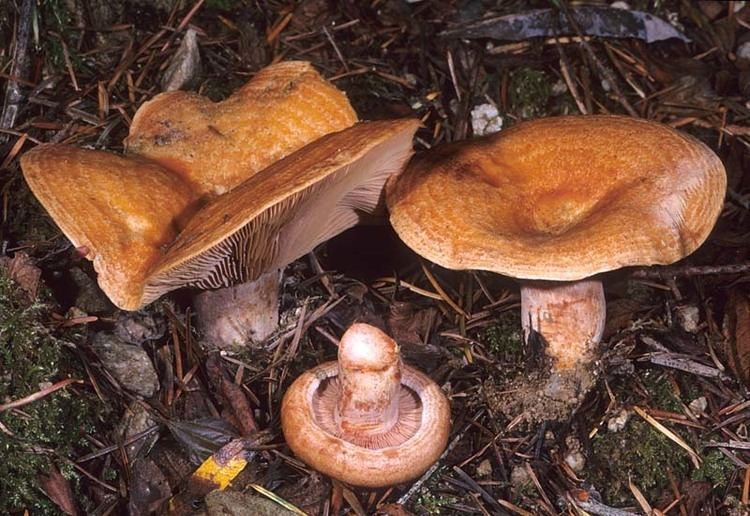Kingdom Fungi Scientific name Lactarius rubrilacteus Rank Species | Division Basidiomycota Genus Lactarius Higher classification Lactarius | |
 | ||
Similar Lactarius, Lactarius xanthogalactus, Lactarius rufulus, Lactarius pallescens, Lactarius subflammeus | ||
Lactarius rubrilacteus fungi kingdom
Lactarius rubrilacteus is a species of mushroom of the genus Lactarius. It is also known as the bleeding milkcap, as is at least one other member of the genus, Lactarius deliciosus.
Contents
- Lactarius rubrilacteus fungi kingdom
- Description
- Distribution and habitat
- Chemical reactivity
- References

Description

The mushroom can be either a bluish green or an orangy brown hue, with creamy white or yellow spores that are ellipsoid in shape. The cap of the mushroom is convex and sometimes shield-shaped and 6–12 cm (2.4–4.7 in) across, reaching a height of 5–15 cm (2.0–5.9 in) tall. The cap also has quite an underfolded margin and a depressive disk.

Lactarius rubrilacteus has many laticifers which appear as a white network across the surface of the mushroom. When sliced or cut, the mushroom flesh will typically release a dark red to purple latex or milky substance. The flesh itself will lose colour when damaged, and is usually granular or brittle to the touch. The stem is quite thin, being only several centimetres in any dimension, and is of an average size and shape for a mushroom. The fungus itself exudes a slight odour that is faintly aromatic. While it is not known if the mushroom would be edible, small taste tests reveal that the mushroom is mild to slightly bitter.
Distribution and habitat

The mushroom is primarily found in parts of western North America, growing in forests and on the ground. The mushroom usually finds cover under conifer trees, mainly pines. It is widely distributed in these areas between the months of June and October.
